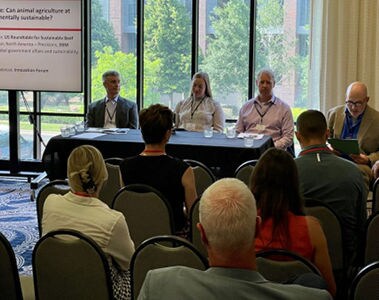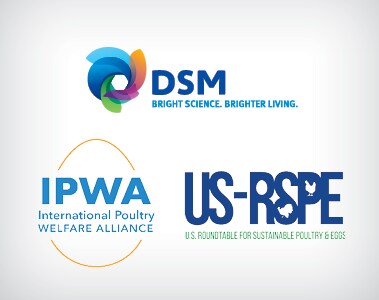Farmers and others involved in North American animal agriculture sometimes wonder what is driving the increased focus on sustainability. Sustainability has multiple different dimensions, and environmental sustainability is among the most prominent, particularly climate change. A significant driver of increasing attention to animal agriculture’s carbon footprint are public commitments by food and agriculture companies to reduce, and ultimately eliminate, the greenhouse gas emissions of the products they make and sell. These commitments are often phrased as Net Zero or Carbon Neutral, among other terms.
When we talk about agriculture’s carbon footprint, we’re referring to more than just carbon dioxide. There are other greenhouse gases, most notably methane and nitrous oxide, all generated by food production. Therefore the “carbon footprint” of a glass of milk, for example, isn’t just considering the carbon dioxide released by burning fossil fuels for electricity or powering vehicles and machinery. It also counts the methane released through cows’ enteric emissions from digestion in their gut, decomposition of their manure and also the nitrous oxide and other emissions produced during cultivation of the crops they are fed, including fertilizer use.
A significant and growing number of major food companies across the animal protein value chain, from meat and dairy processors to grocery retailers and restaurant and food service companies, have made commitments to become Net Zero or carbon neutral by 2050 or some other date, or to reduce their carbon footprint by a certain percentage. dsm-firmenich itself has made such commitments, too. They make these commitments for multiple reasons. However, the implication is that as customers, they are asking their suppliers all the way back through the value chain to join them in reducing greenhouse gas emissions in food production. And for good reason—in most food products, the large majority of emissions are generated at the farm level. For many branded food companies, upwards of 80 percent of their carbon footprint comes from their ingredient supply chain. For another example, for most poultry products, upwards of 80% of their carbon footprint comes from their feed their birds eat.
Even as more and more companies make carbon-reduction commitments, the market is already moving beyond just Net Zero or Carbon Neutral. For instance, here is a dsm-firmenich interview with Rabobank, one of the world’s most prominent agricultural lenders. In it, they describe not only the bank’s commitment to reduce the carbon intensity of its own work, but also an emerging focus on biodiversity, as well as linkages of finance to environmental performance, among other points. While Net Zero company commitments are a main driver today, they are a beginning of a journey that continues to evolve.


